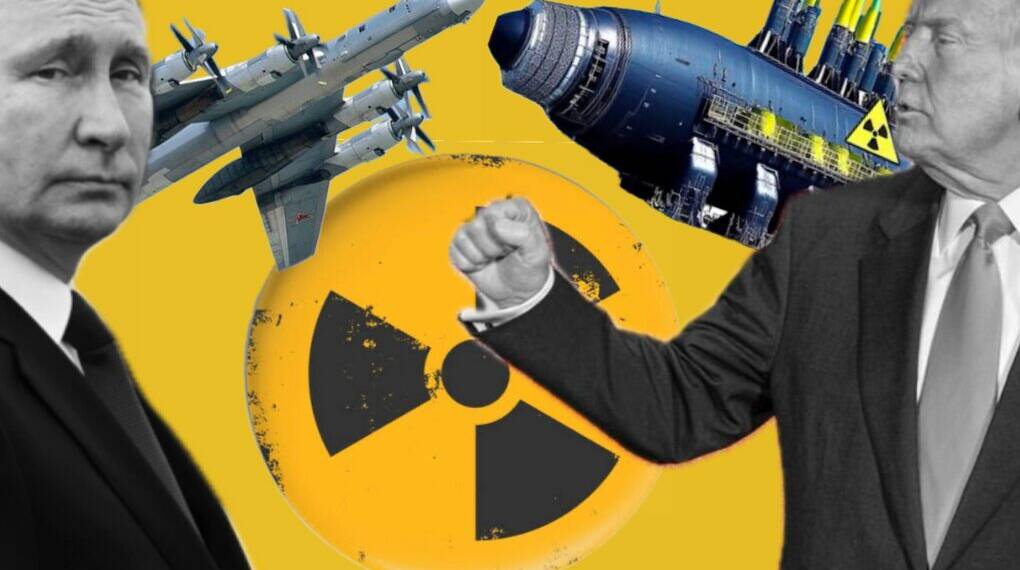In a stark escalation of nuclear posturing, Russian President Vladimir Putin has moved at least four Tu-95MS nuclear-capable bombers closer to Europe shortly after U.S. President Donald Trump ordered the repositioning of two U.S. nuclear submarines near Russia. This development comes amid a tense backdrop of sharp rhetoric and unresolved conflict over Ukraine, with both powers signaling their readiness to employ strategic assets in response to perceived threats. From a global perspective, these maneuvers carry profound military, political, and security implications that could reshape strategic calculations and heighten risks of miscalculation.
Context of the Escalation
Trump’s announcement last week that he ordered two nuclear submarines to be repositioned “in the appropriate regions” was a direct reaction to provocative statements by Dmitry Medvedev, Russia’s deputy chairman of the Security Council and former president, who warned the U.S. against “playing the ultimatum game” and hinted at Russia’s willingness to use nuclear weapons in a potential conflict. Despite Trump’s submarine move being largely symbolic — given the U.S. maintains a continuous submarine presence capable of striking Russia — the rhetoric inflamed tensions at a moment when peace talks over Ukraine have stalled. Putin’s decision to move strategic Tu-95MS bombers closer to Europe shortly afterward is widely interpreted as a signal of Russia’s resolve to demonstrate its strategic capabilities and deter further Western pressure.


The Military and Strategic Implications
The Tu-95MS “Bear” is a long-range heavy bomber capable of carrying nuclear missiles that can strike targets deep into Europe and beyond. Their closer deployment shifts Russia’s nuclear posture to one of higher readiness and enhanced forward presence near NATO’s eastern flank. This mo ave complements Putin’s ongoing efforts to modernize Russia’s nuclear arsenal, including the deployment of hypersonic missiles with nuclear capability in Belarus, Russia’s ally bordering NATO countries.
Meanwhile, the U.S. Navy’s Ohio-class nuclear submarines, some carrying Trident ballistic missiles, represent a stealthy and survivable leg of the nuclear triad. Trump’s order to reposition two of these assets—although military officials suggest it may be more rhetorical than operational—sends a clear message of deterrence and signals readiness to counter any escalation by Moscow. The fact that these submarines’ precise locations are typically classified adds to the uncertainty and tension surrounding the announcement.
Global Security and Geopolitical Risks
Together, these moves exacerbate the cycle of nuclear signaling between the world’s two largest nuclear powers, who collectively control about 87% of the global nuclear arsenal. Despite Cold War-era arms control regimes having been dismantled or abandoned (including the U.S. withdrawal from the Intermediate-Range Nuclear Forces Treaty in 2019 and Russia’s recent formal exit), both sides continue to hold large arsenals capable of global destruction.
This resurgence of nuclear posturing raises several risks:
Heightened Miscalculation: Proximity and increased deployment of nuclear-capable bombers and submarines near potential flashpoints increase the chances of misinterpreting routine military activity as an imminent threat, which could lead to a rapid escalation spiral.
Arms Race Dynamics: Russia’s declaration that it no longer adheres to a self-imposed moratorium on intermediate-range nuclear missiles signals that the door is open to expanded missile deployments in Europe, prompting NATO to consider countermeasures. This could rekindle an arms race reminiscent of the 1980s, undermining regional and global stability.
Diplomatic Strain: Both Putin and Trump have expressed frustration over stalled peace negotiations in Ukraine, using nuclear rhetoric partly as leverage. Such brinkmanship risks eroding diplomatic channels that are vital for crisis management.
Regional and Alliance Considerations
Moving nuclear bombers closer to Europe directly affects NATO countries, especially those at the frontlines in Eastern Europe. It signals Moscow’s readiness to project power and warns NATO against further support for Ukraine beyond its current levels. For NATO, these moves necessitate heightened vigilance and may accelerate plans for enhanced missile defense and deterrence posture in member states.
The U.S., by rotating nuclear subs, reinforces its commitments to NATO security guarantees but also risks exacerbating tensions with Russia, which has steadily denounced NATO’s missile deployments as aggressive provocations. Russia’s military leaders claim they have numerical superiority in nuclear submarines in global oceans, further complicating the naval strategic balance.
Also Read: Trump Wants a Deal. Putin Wants Victory. Is Ukraine Deal Still Possible?
A Dangerous Nuclear Messaging Cycle
The recent moves by Putin and Trump reflect a resurgent era of nuclear signaling as global powers grapple with an enduring conflict in Ukraine and deteriorating arms control frameworks. While experts view much of the rhetoric and posturing as strategic signaling rather than indicators of imminent nuclear conflict, the very public nature of these actions raises the stakes. The deployments underscore the fragile nature of global strategic stability, highlighting the urgent need for renewed dialogue, risk reduction measures, and arms control frameworks to prevent potential catastrophe.
In this volatile environment, restraint and clear communication become paramount to avoid misperceptions that could lead to unintended escalation, with the fate of European and global security precariously balanced.








